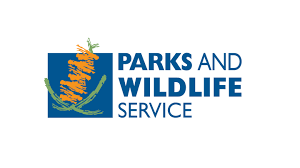State NRM Funding Secured for Cacti Eradication in the Oldfield River
Date: August 2024
The Southern Biosecurity Group is pleased to announce the successful acquisition of funding from the State Natural Resource Management (NRM) Community Stewardship Grants. This funding will be dedicated to continuing our efforts in the eradication of the invasive drooping prickly pear (Opuntia monacantha) from the Oldfield River corridor in the Shire of Ravensthorpe. This project aligns with the State NRM’s Priority 4 outcome: conserving and recovering biodiversity.
Project Background and Need
The invasive Opuntia monacantha has posed a significant threat to the Oldfield River system, especially following the 2017 floods that facilitated the downstream spread of this species. The presence of this cactus in the river corridor disrupts the natural environment by outcompeting native species, causing physical harm to humans and animals, and degrading spiritual sites of local importance.
Without this funding, the unchecked growth and spread of Opuntia would continue to harm the natural environment, adversely affect recreational activities, and potentially encroach on agricultural lands, leading to considerable economic and environmental impacts on the region.
Objectives and Outcomes
The primary objective of this project is to eradicate Opuntia monacantha from a 38-hectare area within the Oldfield River corridor, adding to the 211 hectares already under control. This will be achieved through a combination of traditional herbicide application, manual removal, and the use of cochineal insects as biological control.
By the end of the project, we aim to have rechecked and controlled any missed or newly emerged plants, effectively halting the spread of this invasive species. The project will also focus on increasing community awareness about the impact of the prickly pear and the importance of immediate reporting of any sightings.
Methodology and Community Involvement
Our methodology combines various control techniques and involves the local indigenous community in our efforts. We plan to engage a 20% indigenous workforce to carry out these activities, which will not only help in the practical aspect of the project but also promote cultural diversity and inclusion.
Location and Significance
The Oldfield River corridor is a critical part of the local and regional landscape, serving as a habitat for diverse native flora and fauna. This project will build on previous control efforts in the area and ensure the preservation of the river system’s ecological integrity. The involvement of the local indigenous community in these activities will help maintain the pristine condition of the river and protect the spiritual sites along its banks.
This project is essential for maintaining the health of the Oldfield River system and its surrounding environments. The successful eradication of Opuntia monacantha will prevent injury to humans and animals, protect agricultural lands, and allow native species to thrive. These efforts will contribute to a healthier environment and a more sustainable ecosystem, benefiting the local and broader community.
We extend our gratitude to the State NRM for their support in this crucial endeavor. Together, we can ensure the long-term sustainability of the Oldfield River’s natural resources and safeguard the region’s biodiversity for future generations.
For more information or to get involved, please contact us..










